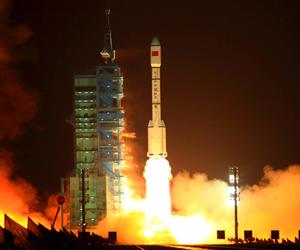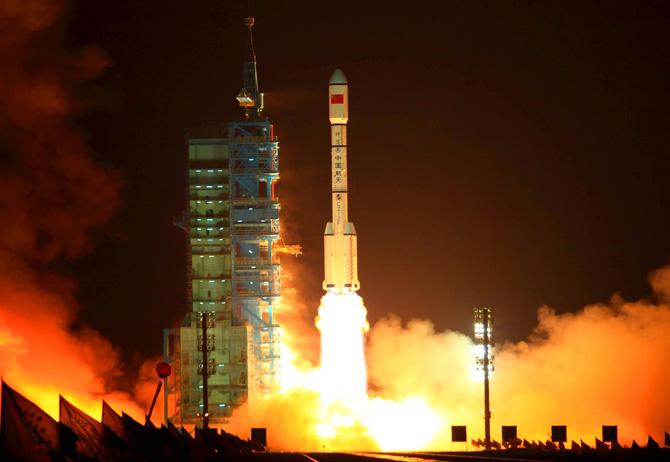The CMSEO had said that the chances of a non-disintegrated fragment falling into an inhabited area and causing casualties were minimal


This file picture taken on September 29, 2011 shows China's Long March 2F rocket carrying the Tiangong-1 module, or "Heavenly Palace", blasting off from the Jiuquan launch centre in Gansu province. A defunct Chinese space lab plunged through Earth's atmosphere on April 2, 2018, breaking apart as it headed towards a watery grave in the South Pacific, Beijing said. Pic/AFP
ADVERTISEMENT
Chinese space lab Tiangong-1 re-entered the Earth's atmosphere on Monday in the central region of the South Pacific, the China Manned Space Engineering Office (CMSEO) said.
Most parts of the space station disintegrated during its re-entry at 8.15 a.m., due to the high temperature generated by the friction with the atmosphere while it was falling, Xinhua news agency quoted the CMSEO as saying.
The Tiangong-1, measuring 10 metres long and weighing around 8.5 tonnes, was launched on September 29, 2011. The calculations on the place and the time of the re-entry have varied widely in the last few hours because the space laboratory was falling out of control, so all estimates were imprecise. The tracking of space agencies around the world is done by radar.
The CMSEO had said that the chances of a non-disintegrated fragment falling into an inhabited area and causing casualties were minimal. The Tiangong-1 had previously docked with Shenzhou-8, Shenzhou-9 and Shenzhou-10 spacecraft. After receiving six astronauts in two Chinese space missions in 2012 and 2013, the space centre continued carrying out research tasks until China announced its retirement in 2016., reports Efe news
In September 2016, China launched its new space laboratory, the Tiangong-2, which hosted its first manned mission with two astronauts on board between October and November. China plans to start in 2019 the construction of a space station consisting of several modules, which is scheduled to conclude in 2022.
NASA's first space station, Skylab, fell to Earth in an out-of-control re-entry in 1979, burning up harmlessly in the process, CNN reported. The last space outpost to drop was Russia's 135-ton Mir station in 2001, which made a controlled landing with most parts breaking up in the atmosphere.
Catch up on all the latest Crime, National, International and Hatke news here. Also download the new mid-day Android and iOS apps to get latest updates
This story has been sourced from a third party syndicated feed, agencies. Mid-day accepts no responsibility or liability for its dependability, trustworthiness, reliability and data of the text. Mid-day management/mid-day.com reserves the sole right to alter, delete or remove (without notice) the content in its absolute discretion for any reason whatsoever
 Subscribe today by clicking the link and stay updated with the latest news!" Click here!
Subscribe today by clicking the link and stay updated with the latest news!" Click here!






